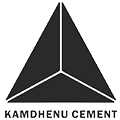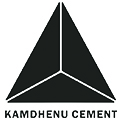Picture constructing a house not by pouring concrete in your backyard and letting it harden, but by bolting it together like a gigantic, extremely durable set of Lego blocks. That’s the wonder of contemporary construction, and it’s known as precast concrete construction. This new technique is transforming how we construct everything from houses to highways.
By manufacturing building elements in a factory-controlled environment and shipping them to the construction site for assembly, precast concrete building provides a smarter, quicker, and more efficient option than conventional construction techniques.
If you’re considering a construction project, knowing what it entails is the first step toward making wise decisions. Let’s get into it.
What is Precast Concrete Construction?
Let’s keep it simple. Precast concrete construction is a building method where we make concrete parts, such as thick walls, floors, columns, and beams, in a controlled factory environment. We let them cure and gain strength there, and then we truck them over to the job site. Once there, a crew with cranes fits all the pieces together to form the complete structure.
It’s a lot like other forms of prefabricated concrete construction you might have heard of. The key idea is that we do the messy, time-consuming work off-site. This is the total opposite of the old way of doing things (called cast-in-place), where we build wooden molds right on the ground, pour concrete into them, and hope the weather holds while it dries for weeks.
How Does This Whole Process Actually Work?
The journey of a single precast wall panel from start to finish is pretty fascinating. It’s a smooth, well-oiled process.
1. It All Starts with a Plan: Before we pour a single drop of concrete, our engineers and architects design every single component on a computer. This digital planning is like a perfect blueprint, making sure every piece will fit together perfectly later on, with no ugly surprises.
2. Factory Floor Magic: This is where the real magic happens. We use strong steel molds and pour in a high-quality concrete mix. We then cure these pieces in a perfectly controlled environment—right temperature, right humidity. This isn’t just about speed; it’s about making a product that’s incredibly strong and consistent. Every single piece that comes out of the factory meets our toughest standards.
3. The Big Move: Once our pieces are ready and have passed all their checks, we carefully load them onto trucks and drive them to the construction site. This bit requires some smart planning to make sure those big, heavy pieces can get to where they need to be.
4. The Fast Assembly: This is the part that surprises everyone. The site itself becomes a quick and efficient assembly line. With big cranes, crews lift each piece into its precise spot and lock it all together. What used to take months of on-site work now takes a matter of weeks. It’s seriously impressive to watch.
Why Are So Many Builders Switching to Precast?
Okay, so the process is cool, but what’s in it for you? The benefits of precast concrete construction are vast:
- You Get Better Quality: Because everything is made indoors, we avoid rain, wind, and dirt. This means every single piece is consistently high-quality and super durable.
- Your Project Finishes Way Faster: Since we can build the foundation on-site while the factory is making the parts, we’re basically doing two jobs at once. This can cut your project time in half. No more waiting around for concrete to dry!
- It’s Safer and Cleaner: With less noisy, messy work happening on-site, there’s less chance of accidents. The site is safer for workers and less disruptive for the neighbors.
- It Gives You Lasting Strength: That controlled factory curing makes for a denser, more resilient concrete. Buildings made this way are built to last for generations.
- It’s Surprisingly Flexible: Want a specific look or texture? No problem. We can mold precast concrete into almost any shape or style, giving architects tons of freedom to design something beautiful.
A Few Disadvantages of Precast Concrete Construction
Now, I’ll be straight with you—no method is perfect. Here are a couple of things to think about:
- The Upfront Cost: Setting up the factory molds and handling transportation can mean a higher initial price tag compared to traditional methods.
- It’s a Heavy Haul: Transporting those massive concrete pieces isn’t simple. You need the right trucks, a clear route, and a site that’s easy for big vehicles to access.
- You’re Locked In: Once those molds are made, making big design changes late in the game can be difficult and expensive. It requires a solid plan from the very beginning.
- Connection Points are Key: The whole building’s strength relies on how well those individual pieces are connected. This requires very careful design and skilled installation.
Where Do You See This Stuff?
You’ve probably seen precast building construction all over town without even realizing it! Here’s some of its common application:
- Apartment buildings and office complexes
- Huge warehouses and industrial facilities
- Bridges and highway overpasses
- Retaining walls and sound barriers
Wrapping Up: The Future is Precast
Precast concrete construction isn’t just a passing trend. It’s the future of building. It offers a smarter, faster, and more efficient way to create the strong, reliable structures we need. By choosing this method, you’re not just building for today; you’re investing in quality that will stand the test of time.
Ready to see how precast can work for you? Let’s talk! At Kamdhenu Cement, we provide the strength that makes this incredible process possible. Get in touch with us, and let’s build something amazing together.
Read Also : Cement and Concrete: The Foundation of Every Strong Structure
FAQs :-
Is precast concrete construction stronger than regular concrete?
Generally, yes. The factory process gives it a much more control, leading to a stronger, more reliable product.
Is precast fabrication more expensive?
Initially, the cost can be higher. However, when you factor in the savings from shorter construction times, reduced labor, and lower long-term maintenance, it often provides a better overall value and life-cycle cost.
What’s the difference between precast and prefab?
“Prefab” is just a general term for anything made in a factory. “Precast” specifically means it’s made from concrete.
Is my project a good fit for precast fabrication?
If you’re building anything that needs to be strong, built fast, and last a long time—like apartments, schools, or warehouses—then absolutely, it’s a very good fit.


